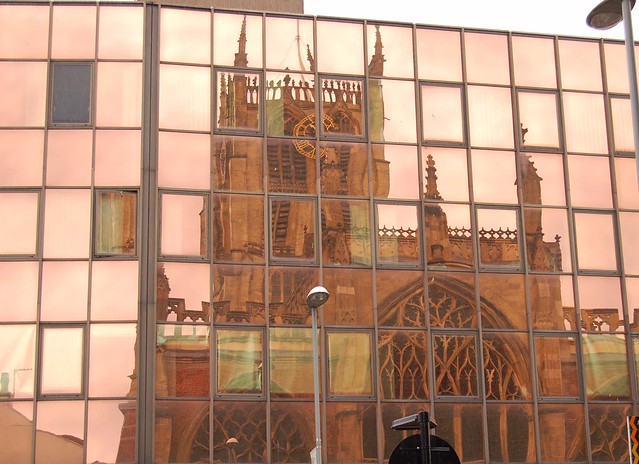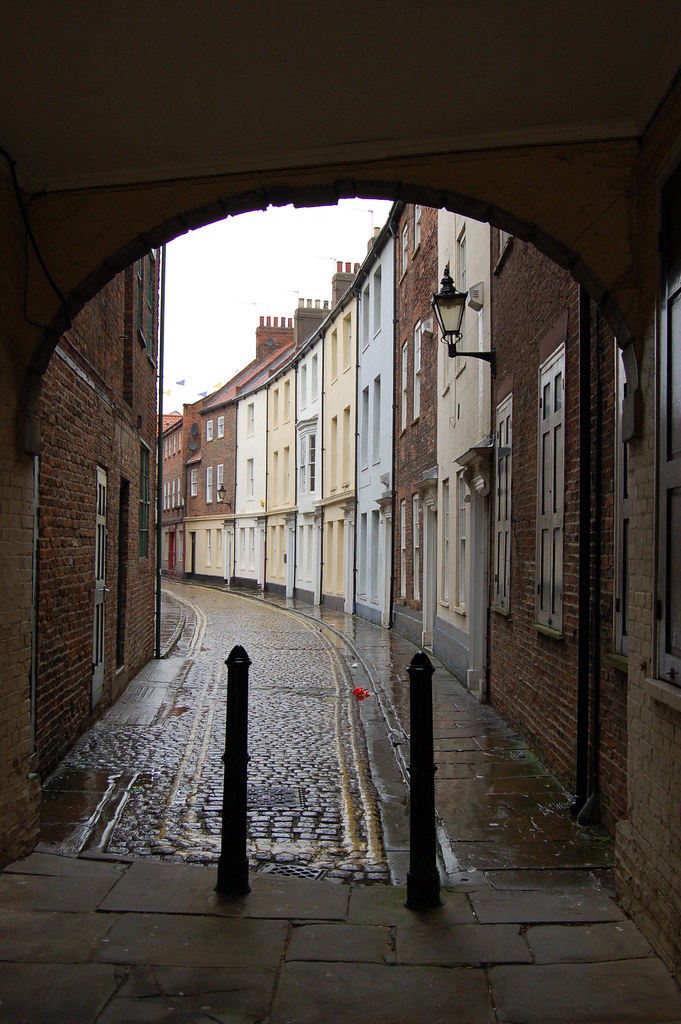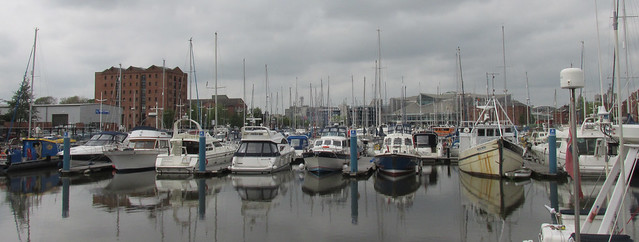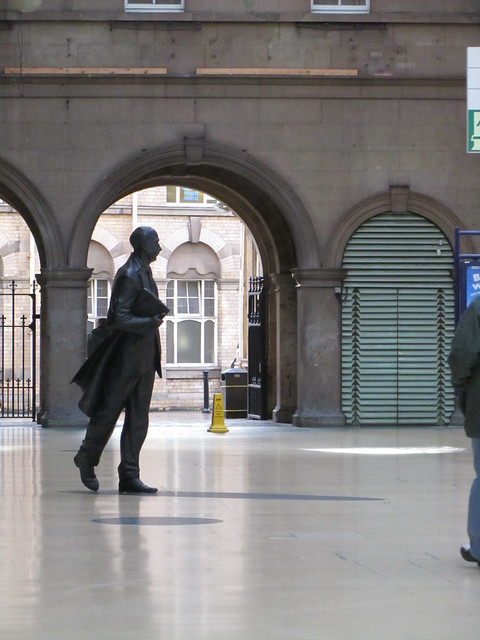 |
| Holy Trinity Church, Hull reflected in nearby buildings |
 |
| One of Old Hull's cobbled streets |
Hull was one of the towns in the Hanseatic League, a group of ports around the Baltic and North Sea who traded as an alliance, ensuring prosperity and success for their merchants. The League mainly traded timber, furs, resin (or tar), flax, honey, wheat, and rye from the east to Flanders and England. Cloth and manufactured goods went the other way. Metal ores, particularly copper and iron, and herring came southwards from Sweden. (Thank you Wikipedia!)
As part of the League, Hull continued to grow and its merchants became very rich. Warehouses and trading centres can still be identified among the winding, cobbled streets of its old town.
In 1369 a religious guild was set up in association with Holy Trinity Church, which soon became a Seamen's Guild, dedicated to the welfare and safety of mariners. It still exists today, in the form of Trinity House, the body responsible for maintenance of the UK's lighthouses.
By the late 16th century Hull was a major whaling port as well as a key point of entry and egress for goods from all over the world. Then, 50 years later, Hull became a significant place in the English Civil War when, in 1642, the city governor Sir John Hotham refused entry to the city to King Charles I.
 |
| Hull Marina today |
Hull Dock Company, the first statutory dock company in Britain, was founded in 1773 by the Corporation. It remained in action until 1963, when the central dock closed and was converted to the present day Marina. The town is still a major port, with cargo ships and passenger ferries sailing daily.
 |
| Fish in the floor |
For many years Hull was a major fishing port although the Icelandic cod wars put an end to the trade. It is still commemorated by an art trail around the streets with life-size images of fishes to be found in strange places: at any point looking down you might find yourself among a shoal of mackerel, whitebait or anchovies carved into the paving stones.
Of course, Hull's latest claim to fame is that it has been named as 2017 City of Culture.
Some famous Hull folk
 |
| Philip Larkin statue: Hull rail interchange |
- There's anti-slavery campaigner William Wilberforce, of course.
- The poet Andrew Marvel, born here 1621.
- Mathematician John Venn, responsible for the Venn diagram, born in Hull in 1834.
- Philip Larkin, Coventry-born poet, lived in Hull for the majority of his life as the resident librarian at Hull University.
- Sir Andrew Motion, former Poet Laureate.
- Stevie Smith, poet and novelist best known for her poem "Not Waving but Drowning".
- J. Arthur Rank. (Yes, THAT one.)
- Arthur Lucan aka Old Mother Riley.
- Amy Johnson, first woman to fly solo from Britain to Australia.
- Actor Ian Carmichael.
- Comedienne Maureen Lipman.
- Actor John Alderton grew up in Hull and attended Kingston High School.
- John Godber, playwright; Artistic Director of the Hull Truck Theatre Company.
- Mick Ronson, guitarist.
- Basil Brush's Mr Roy - Roy North.
- Norman Cook (also known as Fatboy Slim), moved to Hull in the 1980s.
- Archaeologist Paul Bahn.

Fascinating post, and lovely pictures, especially the reflection and the cobbled streets.
ReplyDeleteI didn't know all those famous folk came from Hull.
I'm still intrigued, though, about why they call it Hull, not Kingston. Was it already called Hull before Edward I? Or did they drop the royal part of the name in the Civil War when, as you say, they were on the side of Parliament?
All the best :)
Great post. Never been to Hull, but looks like an interesting place.
ReplyDeleteFascinating information, thank you for sharing it. I knew about Philip Larkin but not about the Andrew Marvel, Stevie Smith and Andrew Motion connections, there is obviously something about the city that inspires great poetry:)
ReplyDeleteThis is a really interesting post about Hull, a little of it I knew from my recent visit but most o9f it is new information. It dedinitely merits another visit as there's so much we didn't see last time which was a visit specifically to visit the Iron Age exhibits at the excellent museum.
ReplyDeleteThank you for sharing interesting observations about my home city!
ReplyDeleteAnother great post full of things I didn't know but which are truly fascinating. I think I used to be a little bit frightened of Old Mother Riley!!
ReplyDeleteHow wonderfully historic. I love that cobblestone street. It's quite amazing how much history is in this little place.
ReplyDeleteInteresting. I've been to Hull a couple of times but I've never actually been to the city centre (just places on the outskirts I guess, like The Deep aquarium!).
ReplyDelete